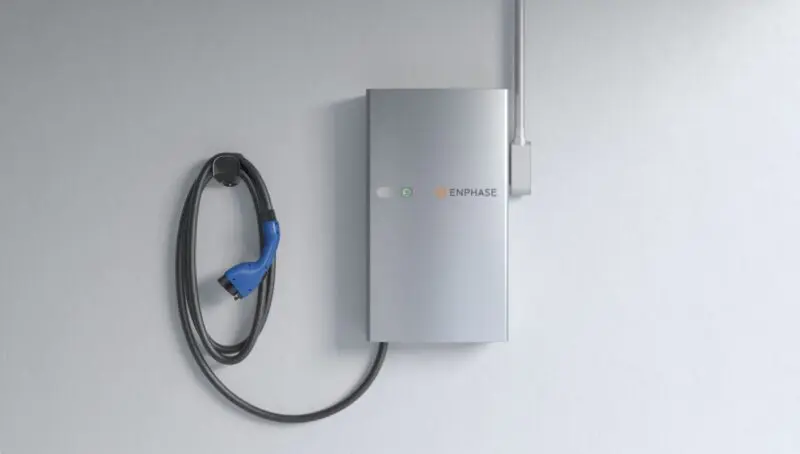US energy technology company Enphase Energy says it has successfully demonstrated its bidirectional EV charger which it expects will enable vehicle-to-home (V2H) and vehicle-to-grid (V2G) functionality.
Enphase, which describes itself as the world’s leading supplier of microinverter-based solar and battery systems, is one of many such companies looking at the possibilities of using EVs as mobile batteries.
This necessitates chargers that are able to take energy in two directions – to the car’s battery and from the car’s battery.
In the case of vehicle-to-home, or V2H, this means using a car’s battery energy to power a home – for example during a blackout – and for vehicle-to-grid, or V2G, sending a car’s battery energy onto the grid for such times as during peak demand or frequency regulation.
The new bidirectional EV charger from Enphase Energy is expected to work with most EVs that support standards such as CCS and CHAdeMO. Enphase’s bidirectional EV charger leverages the power of the company’s grid-forming IQ8 Microinverters and its Ensemble energy management technology.
“The new bidirectional EV charger, along with Enphase’s solar and battery storage system, can be controlled from the Enphase App, empowering homeowners to make, use, save, and sell their own power,” said Raghu Belur, co-founder and chief products officer at Enphase Energy.
“We are working with standards organizations, EV manufacturers, and regulators to bring this charger to market in 2024.”
“The Enphase bidirectional EV charger is the next step on our roadmap to building a solar-powered, all-in-one home energy system that further unlocks electrification, resilience, savings, and control for homeowners,” added Mohammad Alkuran, Ph.D., senior director of systems engineering at Enphase Energy.
“This product will be a game changer for homeowners who want maximum control over their energy usage.”
There is, however, no date set for when the technology will be released, or even authorised, in Australia.
Joshua S. Hill is a Melbourne-based journalist who has been writing about climate change, clean technology, and electric vehicles for over 15 years. He has been reporting on electric vehicles and clean technologies for Renew Economy and The Driven since 2012. His preferred mode of transport is his feet.

